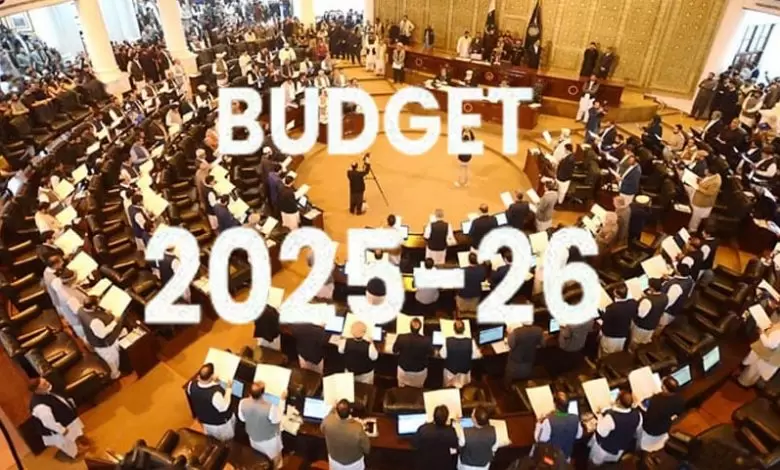
The Khyber Pakhtunkhwa government swiftly passed its budget for the upcoming fiscal year in just one day, despite criticism from within the ruling party.
The budget claims a surprising Rs157 billion surplus, raising critical questions about the province’s financial priorities, especially in the face of mounting public sector crises.
In a province where universities struggle to pay faculty salaries, public hospitals lack basic medicines, and nearly five million children remain out of school, the claim of a massive surplus has left many puzzled.
If such funds are truly available, why are essential services still in disarray? And why are international loans continuing to grow?
The budget projects that the KP government will borrow over Rs171 billion from international aid agencies in the coming year, in addition to Rs5.35 billion in grants. bringing the total expected foreign funding to more than Rs177 billion.
Also Read: Our Martyrs Blood Is Nation's Strength; We Can Never Repay Their Debt, FM Asim Munir
Major contributors include the World Bank (Rs81.41 billion), Asian Development Bank (Rs72.08 billion), and other agencies from the U.S., Germany, Saudi Arabia, Korea, Japan, and China.
While the provincial government has hailed the budget as "public-friendly" and "tax-free," the reality tells a different story.
New taxes and fees have been introduced across various sectors. Large wedding halls now face a Rs50,000 per-event tax, mid-sized halls Rs20,000, and small ones Rs10,000. Even tailors have been brought into the tax net, with those sewing traditional shalwar kameez taxed Rs5,000 annually and those stitching suits or waistcoats taxed Rs15,000.
Petrol pumps, CNG stations, private schools and colleges, doctors, lawyers, and small shopkeepers are also facing new or increased taxes.
Meanwhile, the KP police department has been assigned a revenue collection target of Rs3.26 billion through fines, security services, licensing fees, and internal penalties. This includes a staggering Rs1.8 billion to be raised from traffic violations alone.
At the same time, spending by the Chief Minister’s office is rising steeply. Despite severe economic constraints, a secret fund worth millions has been approved for the CM, and the entertainment and hospitality budget for the CM House in Peshawar has nearly tripled.
Originally set at Rs35 million, actual spending has already crossed Rs124 million, largely due to open-door events for PTI workers and lavish functions.
A comparison with other provinces shows that KP’s CM Office spending is among the highest. The CM Secretariat’s revised budget for the current fiscal year was increased by 106%, from Rs805 million to Rs1.66 billion.
For the next year, the allocation stands at Rs1.41 billion, almost at par with Punjab and Balochistan, and significantly higher than Sindh, despite Sindh’s larger population.
In a baffling move, the budget also includes Rs20 crore for equestrian clubs in Peshawar and Dera Ismail Khan, and another Rs50 crore for horse breeding projects in four districts. An additional Rs50 crore is allocated for constructing a luxury KP House in the scenic Makhniyal area of Haripur.
Upgrades to rest houses in Dera Ismail Khan and a new rest house in Shangla Top are also in the works, costing Rs40 crore and Rs4 crore respectively.
Adding to concerns, the KP government failed to include actual expenditure data for the past 11 months in the budget documents, breaking with transparency practices.
Typically, revised estimates and actual spending figures are presented alongside the new budget, but this year, those numbers were left out-raising further doubts about the credibility of the reported surplus.